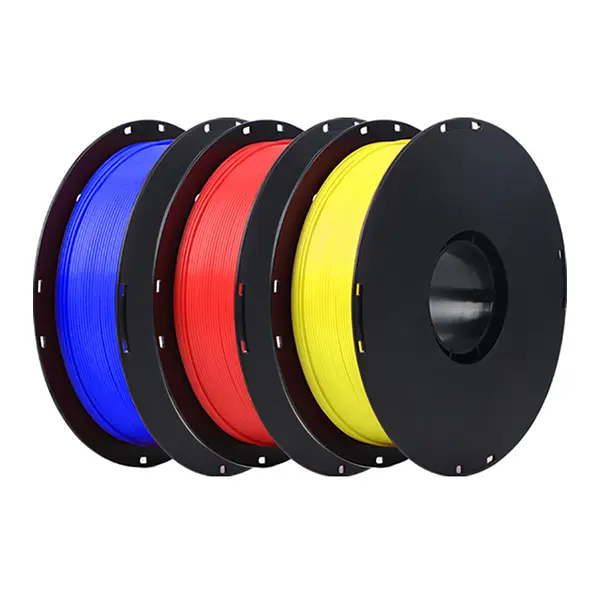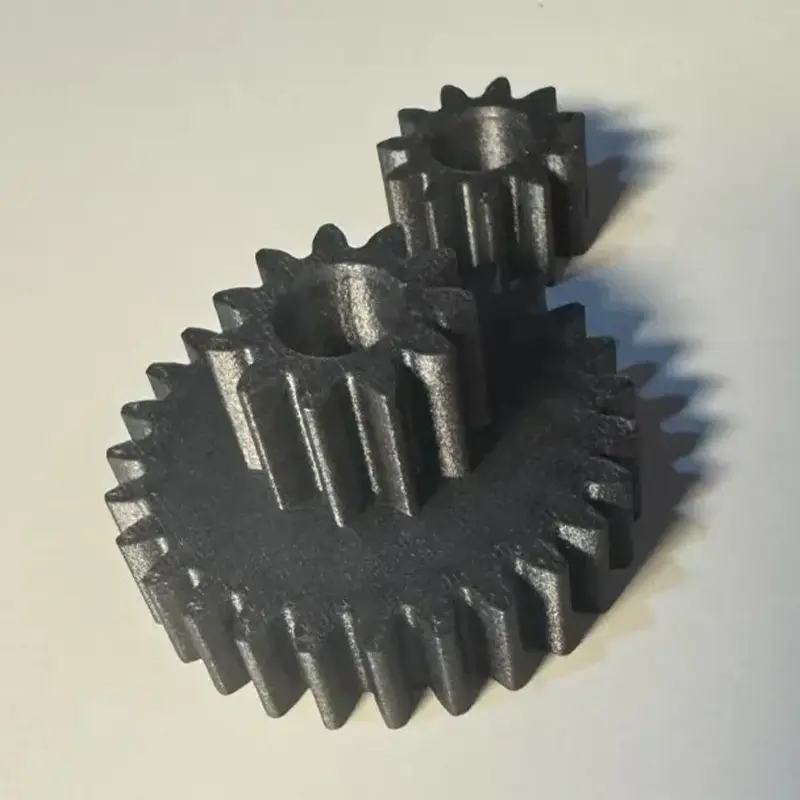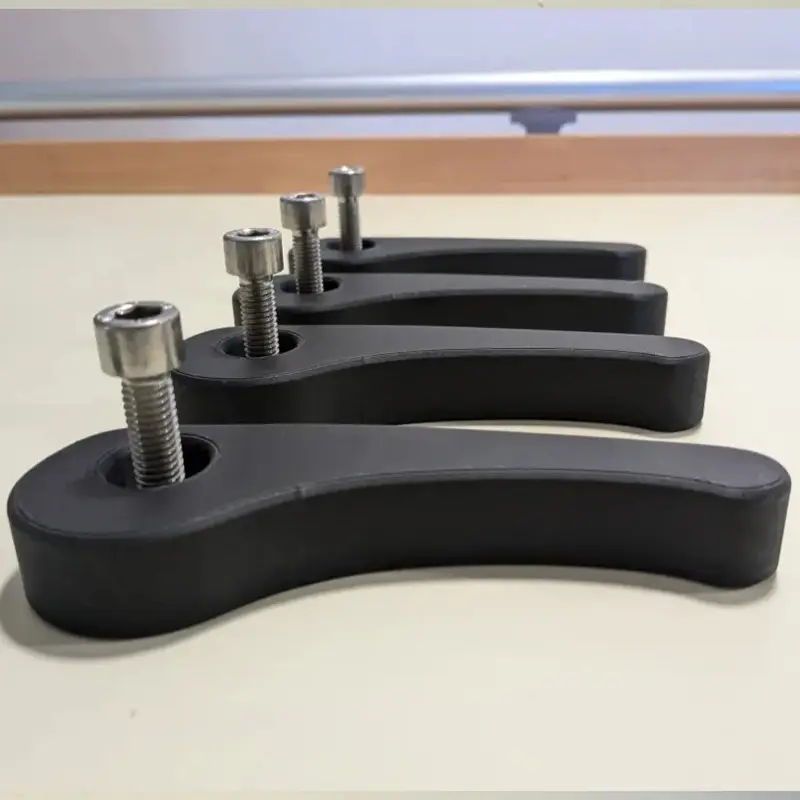Why Your Choice of Filament is Everything in 3D Printing
Hey there, future innovator! So, you’ve got this brilliant idea for a product. You’ve sketched it out, you’ve modeled it in 3D, and you’re ready to bring it to life. You hit “print” and… wait. What are you actually printing with? If you think all 3D printing filament is created equal, I’ve got news for you: your choice of material isn’t just a detail—it’s the single most important decision you’ll make. It’s the difference between a prototype that wows investors and one that warps on the presentation table. It’s what separates a durable, functional end-use part from a brittle disappointment. Think of it like this: you wouldn’t build a race car engine out of clay, right? The same logic applies here. Choosing the right filament is about matching your material’s properties to your product’s purpose. Let’s dive into the three titans of the filament world: PLA, ABS, and PETG.
The Foundation of Every Great Print
Every 3D printed object starts as a simple string of plastic, but that humble string is packed with chemical properties that dictate everything from strength and flexibility to heat resistance and appearance. Understanding these properties is like learning the alphabet before you write a novel. It’s the foundational knowledge that allows you to make intentional, smart choices rather than just guessing and hoping for the best.
Matching Material to Mission: It’s Not One-Size-Fits-All
A stunning architectural model, a rugged automotive clip, and a food-safe container walk into a bar… they each need a different material! There is no “best” filament, only the “best for the job.” Your mission, should you choose to accept it, is to become a material matchmaker, pairing your project’s requirements with the filament that can deliver on its promise.
Meet the Big Three: PLA, ABS, and PETG
These three materials account for probably 90% of all FDM 3D printing. They’re the classics, the workhorses, the go-to options for a reason. Each has a distinct personality, strengths, and weaknesses.

A Quick Comparison Table
| Property | PLA | ABS | PETG |
|---|---|---|---|
| Ease of Printing | ⭐⭐⭐⭐⭐ (Very Easy) | ⭐⭐☆☆☆ (Difficult) | ⭐⭐⭐⭐☆ (Easy) |
| Strength | ⭐⭐☆☆☆ (Brittle) | ⭐⭐⭐⭐☆ (Tough) | ⭐⭐⭐⭐⭐ (Strong & Durable) |
| Durability | ⭐⭐☆☆☆ (Poor) | ⭐⭐⭐⭐☆ (Good) | ⭐⭐⭐⭐⭐ (Excellent) |
| Heat Resistance | ⭐☆☆☆☆ (Low ~60°C) | ⭐⭐⭐⭐☆ (High ~100°C) | ⭐⭐⭐☆☆ (Medium ~80°C) |
| Flexibility | ⭐☆☆☆☆ (Rigid) | ⭐⭐☆☆☆ (Slightly Flexible) | ⭐⭐⭐☆☆ (Some Flexibility) |
PLA (Polylactic Acid): The People’s Champion
If the 3D printing world had a welcome party, PLA would be the host. It’s the most popular filament for beginners, and for fantastic reasons. It’s made from renewable resources like cornstarch or sugarcane, which gives it a slight eco-friendly edge and a sweet, almost syrupy smell when printing (a welcome change from the toxic fumes of some other materials).
The Sweet Spot for Beginners and Aesthetics
PLA is famously easy to print. It doesn’t require a heated bed (though it helps), it sticks to build surfaces like a dream, and it rarely warps. This low barrier to entry means you spend less time fighting your printer and more time successfully creating. It also comes in a breathtaking array of colors and finishes—metallic, glitter, wood-filled, you name it. If visual appeal is your top priority, PLA is your canvas.
Where PLA Shines (And Where It Doesn’t)
Ideal Applications for PLA:
- Concept Models & Prototypes: Quick, cheap, and visually accurate models for design verification.
- Display Models & Figurines: Incredible detail and a beautiful matte finish make it perfect for showpieces.
- Educational Tools: Safe and easy to use in classrooms.
- Low-Stress Consumer Goods: Decorative items, novelty gifts, and containers for cold items.
Limitations to Keep in Mind:
- Poor Heat Resistance: Leave a PLA print in a hot car, and it will deform. It’s not suitable for functional parts that will encounter heat.
- Brittleness: It has low impact strength. It can snap under pressure rather than bend.
- Biodegradability: While often marketed as a pro, it means PLA parts can degrade and become brittle when exposed to the elements over time.
ABS (Acrylonitrile Butadiene Styrene): The Tough Veteran
Meet the old guard. ABS is the plastic that built Lego bricks, car dashboards, and electronic housings for decades. It’s a petroleum-based thermoplastic known for its toughness and durability. Printing with ABS is like driving a manual transmission car—it gives you more control and performance, but it demands more skill.
Durability and Heat Resistance for Demanding Projects
ABS’s killer feature is its high heat resistance. Parts made from ABS can withstand temperatures that would turn PLA into a puddle. It’s also a “tough” material; it has enough give to absorb impacts and flex slightly without breaking, making it ideal for parts that need to endure real-world use.
Taming the Beast: Printing with ABS
ABS is notoriously finicky. It requires a heated print bed (around 100-110°C) and an enclosed printing chamber to maintain a consistent, warm ambient temperature. Without this, the plastic cools too quickly, causing it to contract and warp, lifting your print off the bed and ruining it. It also emits potentially unpleasant fumes during printing, requiring good ventilation or a dedicated air filtration system.
Ideal Applications for ABS:
- Functional Prototypes & End-Use Parts: For parts that need to withstand stress, force, or heat.
- Automotive Components: Interior parts that need to survive a hot car interior.
- Durable Housings & Enclosures: For tools, electronics, and gadgets.
- Parts Requiring Post-Processing: ABS sands beautifully and can be easily vapor-smoothed with acetone for a perfectly smooth, professional finish.
Limitations to Keep in Mind:
- Difficult Printing Process: Requires an enclosed printer, a heated bed, and ventilation.
- Prone to Warping: The arch-nemesis of ABS printing.
- Fumes: Not ideal for use in living spaces or offices without proper ventilation.
PETG (Polyethylene Terephthalate Glycol): The All-Rounder
What if you could have the ease of PLA with the strength and durability of ABS? Enter PETG, the superstar hybrid. It’s a modified version of the PET plastic used in water bottles, with the “G” (glycol) added to make it more clear and less brittle. It has rapidly become a favorite for engineers and hobbyists alike.
The Best of Both Worlds?
PETG is often described as the perfect middle ground. It prints almost as easily as PLA, with minimal warping and no need for a closed chamber. Yet, it delivers strength, durability, and chemical resistance that far surpass PLA and even rivals ABS in many applications. It’s also food-safe once printed and is naturally moisture-resistant.
Strength, Simplicity, and a Bit of Flexibility
PETG is less brittle than PLA; it will bend and flex before it snaps, absorbing energy like a champ. This makes it excellent for functional components, mechanical parts, and anything that might be dropped or knocked around. Its chemical resistance also makes it suitable for storing a variety of liquids.
Ideal Applications for PETG:
- Functional Mechanical Parts: Gears, brackets, tools, and prototypes that need to work.
- Outdoor & Water-Facing Applications: Planters, bird feeders, and outdoor fixture parts thanks to its weather resistance.
- Containers & Bottles: Its food-safe nature and chemical resistance make it a great choice (with proper, food-safe printer hardware).
- Protective Components: Phone cases, jigs, and fixtures.
Limitations to Keep in Mind:
- Stringing: PETG is prone to leaving tiny plastic strings (“hairs”) between parts of a print, which often requires post-processing cleanup.
- ”Oozy” Nature: It can be slightly more challenging to get perfect, crisp details compared to PLA.
- Bed Adhesion: It can stick too well to certain build surfaces, like glass, potentially damaging the surface upon removal if not careful.
Making the Right Choice: Your Project Decides
So, which one should you choose? Let’s make it simple. Ask yourself these questions:
- Is this a visual model or a concept prototype? -> PLA
- Does it need to survive high heat or be exceptionally tough? -> ABS
- Do I need a strong, durable, and easy-to-print part for functional use? -> PETG
Beyond the Spool: Sourcing Reliable Filament for Your Business
For hobbyists, buying a single spool is fine. But for businesses looking to integrate 3D printing into their custom manufacturing and product development workflow, consistency and reliability are non-negotiable. This is where partnering with an expert OEM manufacturer like Yuesun 3D becomes critical. We don’t just sell filament; we provide material solutions. We ensure batch-to-batch consistency, offer technical support on print parameters, and guarantee the quality of the raw material that goes into your products. When your production run depends on it, you can’t afford variability.
Conclusion: Print Smarter, Not Just Harder
Choosing between PLA, ABS, and PETG isn’t about finding a winner; it’s about finding the right tool for your specific job. PLA is your go-to for effortless, beautiful prints. ABS is your industrial-grade workhorse for high-heat, high-strength applications. PETG is the versatile all-rounder that combines ease with exceptional durability. By understanding their unique personalities, you move from simply operating a 3D printer to truly mastering it. You’re no longer just making things; you’re engineering them with intention. So, grab the right spool and start creating something amazing.
Frequently Asked Questions (FAQs)
1. I’m completely new to 3D printing. Which filament should I try first?
Start with PLA, without a doubt. Its forgiving nature and high success rate will help you learn the basics of your machine, slicing software, and the printing process without the added frustration of warping or fumes. It’s the perfect training wheels.
2. Is PETG really as strong as people say?
Yes, and often stronger in practical terms. While ABS might have a higher ultimate tensile strength on a data sheet, PETG’s layer adhesion is typically better, and its slight flexibility allows it to absorb impacts that would cause more brittle materials like PLA to snap. For many functional applications, PETG’s overall durability is superior.
3. Can I print ABS safely in my home office?
It is not recommended. ABS printing emits styrene fumes, which can be irritating to the eyes and lungs and are unpleasant to smell. If you must print with ABS in a shared space, it is essential to use a printer with a full enclosure and a high-quality HEPA and carbon air filter, or to ensure the room is very well-ventilated.
4. My PETG prints are very stringy. How can I fix this?
Stringing is PETG’s most common quirk. Combat it by: 1) Increasing Retraction: This is the primary setting to adjust. Increase retraction distance and speed in your slicer. 2) Lowering Printing Temperature: Print at the lower end of your filament’s recommended temperature range. 3) Enabling “Wiping” and “Coasting”: These advanced slicer features can help clean up nozzle pressure before moving.
5. For a professional product finish, which material is best for post-processing?
ABS is the undisputed king of post-processing. It can be sanded and polished like wood. Most importantly, it can be vapor-smoothed with acetone fumes, which gently melt the surface layer to create a perfectly smooth, glossy, injection-molded look that is impossible to achieve with PLA or PETG through simple means.



